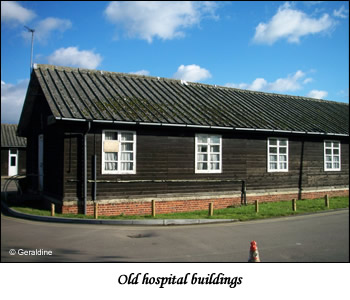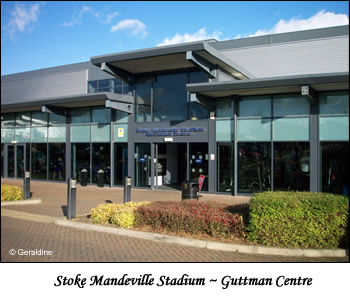The hospital originated as a cholera hospital in the 1830s. The village of Stoke Mandeville was badly hit by the epidemic that swept through England early in the decade. It was built on the parish border between Stoke Mandeville and Aylesbury with funds contributed by both parishes. The building was situated outside of the villages as, understandably, the people did not want the risk of infection from this highly contagious disease.
By the early 20th century it had become an infectious diseases hospital where all infections were treated, not only cholera. However, the distance between the hospital and Aylesbury reduced as the town grew and soon the risk to the community meant that infectious diseases could no longer be treated there.
During World War Two, Stoke Mandeville was used for military casualties and expanded to take extra patients in support of Aylesbury’s Royal Bucks Hospital. Spinal injuries were also treated here for the first time when in 1944, the British Government asked Sir Ludwig Guttmann to found the National Spinal Injuries Centre to treat badly injured WW2 servicemen.
Guttmann was a leading German born neurologist who had fled to England in 1939. He firmly believed in sport as a means of therapy which helped build not only physical strength, but also confidence and self respect. So when the 1948 Olympic Games opened in London, he arranged a sports competition, the ‘Stoke Mandeville Games’, for sixteen British WW2 veteran patients with spinal cord injuries.
The annual games became the first international event of their kind in 1952 when Dutch veterans also took part. These games have been described as the inspiration of the Paralympic Games, with the first official games being held in Rome in 1960 and no longer limited to service veterans.
Following the founding of the NHS in 1948, all operations were moved from the Royal Bucks Hospital to Stoke Mandeville, so making it Aylesbury’s main hospital.
Growth of the facilities continued during the 1950s, 1960s and 1970s, and the building of the Ludwig Guttmann Paraplegic Stadium next to the hospital made it an international centre for spinal injuries and paraplegics.
 |
 |
Today Stoke Mandeville is still working to meet the changing needs of the growing community with a new maternity wing, plans for the refurbishment of the accident and emergency unit and more extensions to buildings. The Ludwig Guttmann Stadium has also been chosen as an official training venue for the 2012 London Olympics and Paralympics.
Geraldine
© Geraldine 2009
